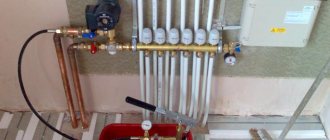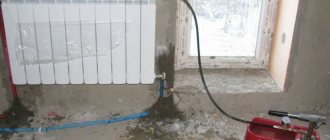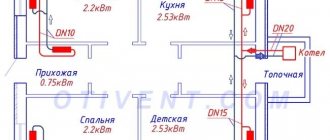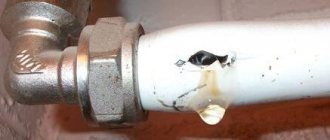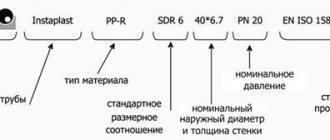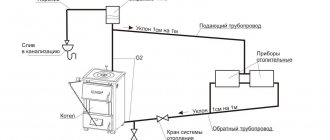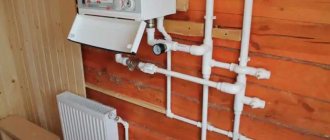Sequence of actions
There is no single rule here, and therefore each person has his own point of view on how to properly wash a radiator. But as practice shows, you can first clean it from accumulated dust, and if the radiator is located in the kitchen, then from greasy film.
After removing the battery and carrying out the necessary work inside it, you should simply correct the places where stains remain, and then pour water on top. After this, it is left for the necessary time to dry.
How to remove dust from the outside of a radiator using the dry method
There are two ways to clean the outside of the battery from dust without water:
- using a vacuum cleaner;
- using a hair dryer.
The first method is to use a vacuum cleaner. If the radiator fins are located close to each other, or, even worse, there are plates between them, then you should work with this technique with nozzles. Among them there are small ones, they are specially adapted for small crevices and hard-to-reach places.
The second way to clean the battery is to place a large damp cloth between it and the wall, leveled over the area of the wall. Then blow out all the dust between the ribs. It flies towards the wet material and sticks to it. At the end of the procedure, carefully remove this rag and rinse.
These options for removing dust from batteries are suitable for weekly cleaning, but for general cleaning, the radiator should be washed more thoroughly.
How to properly wash the battery?
Many housewives want to know how to quickly and efficiently wash the battery. To answer, you need to know the degree of its contamination.
It may be lightly soiled with dust. In this case, in addition to dry cleaning, you can wash with plain water. The best option would be boiling water, because at high temperatures the liquid has increased activity and you can get better results.
To carry out the washing procedure, you need to prepare. To do this, stock up on containers into which water, rags and boiling water should eventually flow. You should place a rectangular dish under the radiator so that it sits organically near the wall, under the radiator. They begin to carefully pour boiling water over the top of the radiator; it will flow into the prepared dishes and take the dust with it.
A good answer to the question of how to wash the battery inside between the ribs is to use a steam mop. Before starting the process, spread cotton rags so that moisture is well absorbed. Hot steam does the job easily.
In case of severe contamination of radiators, “heavy artillery” is prepared. These are detergents with sprayers and various brush configurations (with fancy bends). Housewives begin their work by moistening the battery, and then they spray household chemicals over its area. After this, leave the radiator for a while so that the product does its job. Then wash with warm water and brushes.
Remove rust from radiator
There are several ways to remove rust from the metal surface of a radiator.
The simplest is mechanical, that is, we take a battery, take metal brushes and sandpaper and clean off all the rust and the layer of previous paint.
(Of course, the method is very long and difficult, but the most effective). You can also use the sandblasting method.
But, sometimes there are cases when the mechanical method cannot be used when we use mechanical compounds:
- We prepare a solution (500 ml of water, 105 g of ammonium, 100 caustic soda, 400 g of 40% formaldehyde, then add another 500 ml of water), to this solution add 10% sulfuric or hydrochloric acid (100 to 3). The part you need, first of all, degrease (for example, with gasoline) and allow to dry, after which the rusty parts should be dipped in the resulting solution for 20-30 minutes, then rinsed thoroughly with hot water.
- Use tin chloride (dip rusty parts in it) then rinse and let dry.
- Fish oil (apply it to the problem area and leave it for several minutes).
- If there is little rust, you can moisten cotton wool with kerosene and use it to wipe off the rust.
- Clean off rust with machine oil and charcoal.
Home remedies (using what you have on hand):
- Vinegar + citric acid (1:1) and apply to areas, leave for a couple of hours.
- Baking soda (mix with water to form a thick paste) and apply to areas for 20 minutes, then wipe off with a wire brush (the procedure may be repeated).
- Coca-Cola (dip battery parts in Coca-Cola and leave for a while).
- Ketchup. Apply ketchup or tomato paste to the rust stain, leave for 10 minutes, then wipe dry.
- Foil (using it, you need to scrub off the rust from the radiator).
Radiator paint
The choice of paint is a very important aspect, because the final result will depend on the choice.
First of all, the paint should:
- Withstand high temperatures (at least 100°C);
- Be resistant to mechanical stress;
- Have protection from an aggressive environment;
- Don't be toxic.
The following types of paints are available for sale:
Acrylic enamels. They are made from organic solvents, so when the paint dries, they emit a characteristic solvent smell. When dry, the surface becomes glossy and shiny.
Advantages:
- High service life;
- Colors remain bright and do not fade;
- Dries quickly;
- Cracks and “wrinkles” do not appear on the surface;
- To clean the brushes, you only need water;
- Low price (compared to oil ones);
- Can be used in rooms with high humidity
Flaws:
High difficulty in removing acrylic paint from the surface.
Alkyd paints. The coating is very resistant to high temperatures. There is a fairly large selection of this paint in different colors on the market and in specialized stores. But when dried and at high temperatures, this paint emits an unpleasant odor.
Advantages:
- Durable;
- Elastic;
- Dries quickly;
- Do not lose brightness;
- Do not crack or shrink when dry.
Flaws:
- Fire hazardous;
- They are afraid of alkalis.
Water-dispersion paints. It is considered the best choice, since this type of paint does not have the standard unpleasant odor and also dries much faster.
But pay attention to the packaging; the packaging must be marked “for painting heating radiators and pipes.” Advantages:
Advantages:
Cheaper than acrylic paint.
Flaws:
Less resistant to moisture and mechanical damage.
Today, the best paint for radiators can be considered acrylic; it has a lot of advantages, at a fairly low price.
Preparing the radiator for painting
Sequencing:
- We clean the surface from dust and dirt.
- We wash off the old paint.
- Then the surface is sanded with sandpaper and degreased.
- An anti-corrosion primer is applied to the cleaned surface.
There are paints in stores that already contain a primer; they are usually applied to the surface without preliminary work (but they need to be cleaned and degreased).
Painting process:
- Turn off the heating (if possible, if not, then at least turn off the hot water).
- Choose paint;
- Cover the floor (put paper, wallpaper or fabric);
- Apply paint from top to bottom;
- First the internal floors, then the external ones;
- Wait for the first layer to dry;
- Apply a second coat.
With careful priming and high-quality painting, you can forget about rust stains on the batteries for a long time and again admire your bright batteries.
But if you are not satisfied with the simple design of the batteries, you can improve it by reading THIS ARTICLE on how to decorate the battery with your own hands.
Radiator sections
Although old cast iron radiators are the best option for central heating, they are often the cause of leaks. One of them may be water leakage in the place where the fins connect to each other. It is not always clear where the hole appeared due to pressure. Often water completely covers the battery. To identify the area where there is a leak, you need to completely turn off the water with the taps and wait until the pressure drops through the hole or release it with the Mayevsky tap. When the water stops flowing, you need to wipe the batteries dry and try to determine where the leak occurred. If the cast iron battery has leaked at the junction of the sections, then using cold welding would be an excellent solution.
Usually this substance is two-component and is sold in small tubes. At its core, cold welding is an epoxy resin with metal powder additives. Before using it, it is necessary to clean and degrease the area where the leak is noticed. It is important to remove not only rust, but also paint from the leak site; it is better to make small indentations on each side so that the interaction area is large. The leak area can be cleaned using a knife sharpening stone. Cold welding usually indicates the method of its use, but some types are not suitable for use with water, because when exposed to it, polymerization is impossible.
Preparing for work
If you don’t want to run through authorities and pay a lot of money for services, you need to know how to clean cast iron batteries yourself. In principle, there is nothing complicated in this process if you devote a little time and effort to it.
- If washing is carried out in an apartment, then it is necessary to prepare the bathroom. To do this, it is better to place a grate on its bottom and cover the walls with a rag. If there is no pallet, then you can use the same rags, only in a thicker layer. This will protect the container from damage and protect the enamel coating. You also need to cover the drain with a fine mesh to prevent debris from getting into the water pipes.
- All water must be drained from the heating system, having first been disconnected from the main communication.
- The threaded clamps are removed from each battery using an adjustable wrench.
- Plugs must be placed in the pipes at the removal site.
When disconnecting the radiator from the heating network pipe, you should substitute a container in advance, since water may remain in it, just like in the heater itself.
The further task is how to rinse the inside of the cast-iron battery under running water in a bathtub. There are both special and “folk” means for this.
Washing with soda ash and whey
According to videos filmed by various experts, cleaning with soda ash is carried out as follows:
- Plugs (plugs) are placed on the two holes of the outer section.
- Soda ash is diluted in hot water. Half a standard pack for 6-10 liters is enough.
- They lift the heating radiator from the floor, placing it on the section with plugs. The section with two free holes should be at the top.
- Water with soda ash is poured through one hole. Air will escape through the other. Therefore, it does not need to be drowned out.
- Plug both holes and place the battery on the floor. The heating device must lie down.
- So that the soda ash can eat away any adhering dirt, rust, and possibly even old paint that has come in with the water, the radiator needs to be shaken. To do this, grab the top and raise/lower it several times. The bottom should not come off the floor. The same is repeated on the other side.
- Relax for 1 hour, watching a video on the Internet about the features of removing old paint from cast iron and applying new paint.
- Lightly tap along the entire perimeter with a wooden hammer. This is done so that the dirt is completely removed from the walls. At this time, the paint may come off. This means that it was poorly attached to the cast iron.
- Place the radiator on the nightstand so that one of the plugs is in the air.
- Place a bucket under the plug and unscrew the plug.
- After draining the water, the radiator should be flushed. To do this, unscrew the plug at the opposite end and insert the hose from the water supply. Open the tap. Water will flow into the radiator under pressure, thanks to which it will be possible to wash away dirt and completely clean the heating device.
To clean the radiator with serum, you need to follow all the steps described above. Just use whey instead of soda. This process, of course, can be seen in various videos.
Why does a cast iron battery clog?
What is the main reason for contamination of cast iron radiators?
The quality of water does not improve from year to year; over time, everything leads to the fact that many mechanical particles settle in heating systems.
Chemical flushing of heating pipes.
For example, a small piece of wire or similar metal elements circulate along with water through heating risers. Water is usually drained during the non-heating season, which leads to pockets of corrosion (rust) forming in the pipes.
Before finally turning on the heating, hot water is supplied under pressure; it breaks off particles of corrosion, which also remain in the pipes. And the water itself that is put into the pipes is often not the cleanest. This buildup of debris in cast iron systems causes rust waste circulating through the system to clog the water passage, causing the batteries to cool.
Over time, more and more debris accumulates in the batteries, which affects their heating properties. The riser itself may be hot, but the pipes may be warm. If you notice this, there is nothing left to do but clean the radiator.
Remove rust on the heating battery
The entire system consists of heat-transfer devices and wiring, which is represented by pipes. There is also a central riser through which hot water is supplied to the home. Any of the modules can leak. The cause of the leak may be poor-quality assembly, as well as defective material from which the pipes or radiators are made. Knowing this, you can predict where a leak might appear. Among such places are:
- the junction of the outlet pipe with the riser;
- pipe seam;
- leakage between battery sections;
- leak at the pipe inlet to the radiator;
- the appearance of a fistula in the radiator section.
Each type of leak requires its own approach to elimination. In some cases, the same materials may be used.
Many homeowners have at least once in their lives encountered a situation where a fistula appears in a heating pipe or a battery leaks. Having received such experience, these people already know what tools should always be on hand to solve the problem. What methods can be used to eliminate leaks in different places of the heating system will be discussed in this article.
How to find a leak in a heating system
It’s good when the leak site is visible to the naked eye. All that remains is to take measures, which we will discuss in the next section.
https://www.youtube.com/watch?v=NmrwNBwUvcM
Let's start by looking for hidden leaks in radiators and heating pipes. After all, there are often cases when the loss of coolant in a closed heating system can only be detected by a decrease in pressure recorded by a pressure gauge. Moreover, it is not possible to visually determine the location of the defect.
It is most difficult to find and eliminate leaks when the pipes are laid hidden or embedded in the floor screed.
Small “elusive” visual defects through which the coolant slowly escapes can be found by opening the taps one by one. The procedure must be performed after the end of the heating season; later it will become clear why. The sequence of actions is as follows:
- the system is supplemented with water to the operating pressure, usually it is 1.2-1.5 Bar;
- all taps and valves in different parts of the pipeline network are closed: on radiators, branches, near the boiler and other equipment;
- let the system stand for 2-3 days;
- Monitoring the pressure gauge readings, open all the taps one by one, starting from the boiler.
Cleaning radiators in private and apartment buildings
Radiators get clogged inside in any case: whether they are located in a private house or in an apartment building.
And how to properly rinse heating batteries? Things are much better with flushing batteries in an individual living space than if you do this work with one heating system for everyone. In your home, everything depends only on the owner of the home.
In an apartment building, this procedure can be done without the services of a plumber. But it is necessary that the condition be met - the risers should not be clogged, because there will be no effect. Flushing should be done before the heating season, when the risers are still without water. It is advisable before it starts, since then the utilities will have already purged them. After supplying water and using it, you will feel a difference in the degree of heating of your batteries.
A positive result is guaranteed when residents of apartments whose heating is connected to one riser agree to flush their radiators all together. In this case, the debris accumulated in the batteries will have no chance to remain in the system, and this will give the maximum effect from the procedure performed.
How to flush cast iron radiators?
In this section you will learn how to clean cast iron batteries. These products were in great demand in the past, and now, after many years, most of them are in place and in use. From this we can conclude that cast iron batteries are truly durable. The disadvantage is the formation of rust and scale inside.
Before cleaning the batteries:
- pre-drain water from the system;
- select the necessary plumbing tools;
- place a vessel under the radiator into which water can drip after it is disconnected from the system;
- dismantle the product by removing it from the pins.
The radiator itself can be washed in a cast-iron bath or outside. To do this, prepare a solution of a product that will remove scale and rust from the walls. The following substances can be used:
- means for flushing radiators in cars;
- vinegar essence;
- caustic soda;
- lemon acid;
- milk serum.
If you still decide to flush the bathroom, you should definitely protect the drain with a plug with a mesh. Before starting work, remove all plugs from the battery, and gradually pour boiling water from the kettle from all sides. The radiator is shaken if possible and the water is poured out. The waste water will already contain scale and rust particles. Next, pour in the active solution and wait 1-3 hours. After this time, the radiator is again shaken and tapped with a wooden hammer. The entire contents of the battery are drained again and water is added again. The procedure with water is repeated as many times as deemed necessary. If acid was used, you should try to wash off its remains so as not to provoke the appearance of rust again.
How to properly flush heating radiators made of aluminum?
How to wash aluminum radiators?
Of course, there is a difference in actions, but it is not big. The process of removing batteries is much easier in aluminum radiators, since they are more modern. Aluminum objects are not subject to corrosion, which means there is no need for tapping, which can also deform the products.
Similar actions are carried out with cast iron batteries, only with the specified nuances. When reinstalling, modern sealants are used, such as FUM tape.
Is it necessary to remove radiators when cleaning them?
And the last question that may arise from readers: how to wash heating radiators without removing them? If the work is carried out in an individual heating system, and it is of short duration, then water can be supplied and drained on the other side. Since hot water has a more pronounced activity, it should be poured in.
Despite the labor-intensive work, it extends the life of the heating system. With regular washing, the need to dismantle it may disappear, and the process will be carried out according to the above method.
You can see how to wash a cast iron radiator in the video:
https://youtube.com/watch?v=d9l4AN9O2Hs
How and with what to clean heating radiators?
Even the most modern heating system will function perfectly only with constant maintenance. It often happens when, for no apparent reason, the quality of heating in a house decreases - the air takes a long time to warm up or the temperature in the room does not rise above a certain degree. And this despite the fact that energy consumption costs have not decreased at all.
Insufficiently warm heating sections indicate they are clogged
But what caused you to start freezing in your own apartment?
- Perhaps there are air pockets in the system that are preventing water from flowing through. In this case, you need to know how to vent a heating battery or bleed air from a certain area of the system.
- Another factor may be the poor condition of the batteries, their contamination, which appeared during long-term operation.
All this debris formed inside the radiator, such as pieces of rust, scale deposits and loose small particles, impede the free circulation of water, clogging the holes and accumulating in the joints. And contrary to popular belief that such troubles only happen in old heating systems, modern radiators are also susceptible to contamination, albeit to a lesser extent .
Therefore, to maintain the efficient functioning of the system, thorough flushing of the heating radiators will be required.
What is needed for the job?
The set of necessary tools, tools and materials depends on which radiators will be cleaned. So, it’s worth stocking up on a wrench of the appropriate size or a special adjustable one for plumbing work, sealing tape or sealant for installing modern systems, as well as tow and paint (preferably thickly ground red lead) for old cast iron batteries. Vinegar essence or soda ash can be used as a cleaning agent, as well as chemicals to remove blockages, rust and scale.
In addition, it is necessary to determine the place where the radiators will be cleaned. If the work is carried out in an apartment, then it would be best to place the radiator in a bathtub or shower tray, first covering them with thick cardboard or rags so as not to scratch the enamel. And you can clean the heating radiators in a private house in the yard - and it will be more convenient to carry out the work, and the floors will remain clean.
Taking into account that water will inevitably flow when removing radiators, measures should be taken to preserve the property.
First of all, you should move the furniture standing nearby, remove or raise curtains, remove carpets, and if you have expensive flooring, cover the surface with plastic film.
When everything is ready, you can start working.
What and how to flush the heating battery?
By following simple recommendations, you can do all the work yourself without involving specialists or complex equipment:
Shut off the water
- We shut off the water in this area using the built-in valves. If there are none, for example, as on old cast iron radiators, then you need to drain the water from the entire system.
- We unscrew the battery, remove it, pour out the remaining water from it and take it to the place of work.
- Using a wrench, unscrew the end caps (plugs) on the battery.
- Initially, before cleaning the heating battery, it is recommended to rinse it with plenty of hot water to mechanically remove loose pieces of rust and other debris.
- At the second stage, depending on the degree of contamination, it is necessary to use special cleaning agents. Compared to traditional household preparations, industrial chemical concentrates recommended for removing rust and scale provide a better effect. Pour a suitable solution into the battery, close all the plugs and leave for a certain time (depending on the type of radiators, their contamination and the product used).
- After this, you should tap all the cavities with a wooden or rubber hammer so that the layers come off the walls faster. After shaking the battery several times, you can open the plugs and drain everything. The remaining particles of contaminants and the drug are washed off with plenty of clean water. By how dirty the water is drained after this, you can judge the quality of the cleaning and the need for a repeat procedure.
- Washing a cast iron battery has its own inherent difficulties. Firstly, the product itself is quite heavy and bulky, which makes working with it difficult. Secondly, the surface of cast iron is rough, which contributes to the accumulation of more deposits. Therefore, to wash such heating systems, it is more advisable to use a special means for cleaning car radiators, strictly following the recommendations of the instructions.
- Each time after using chemicals, the battery is thoroughly washed to not only wash off the dirt, but also remove the remaining reagent. It is especially important to do this at the last stage, before installing the radiator in place, because chemical residues can contribute to destructive processes inside the system, provoking metal corrosion.
Centralized battery cleaning
Washing cast iron batteries with your own hands is a good thing, it doesn’t cost anything, but it requires a lot of effort, considering how much they weigh and time. If you involve heating network workers in this procedure and get the go-ahead from your neighbors, you can get results much more efficiently than fiddling with the radiators in the bathtub yourself.
To do this, you need to submit an application to the management company and pay for the cost of the service. This procedure is carried out exclusively in high-rise buildings, and it does not require dismantling elements of the heating network.
- Water is supplied under strong pressure into the system at certain intervals, which fills it with air bubbles.
- Rushing through pipes and radiators, the bubbles knock down rust, scale and debris in the channels on their way, carrying it all out.
- Repeated rinsing with air-filled water until it is clean and clear will ensure a good cleaning.
This is the most effective way to clean cast iron batteries without removing them from the wall, but it takes time and money.
Although this method seems to be the easiest for busy people who are willing to pay for such a service, organizational issues and waiting for permission may take some time.
How to Determine When Battery Flushing is Necessary
If your heating system consists of ordinary metal pipes and a cast iron radiator, and it has not been flushed for a long time, and you are not going to change it before the start of the new heating season, then the battery should be flushed.
Let us clarify: this should be done BEFORE the start of the heating season, and not when everything is already turned on, and suddenly it turns out that the battery does not heat well.
Do-it-yourself washing technology
You can rest assured that you will not be able to complete this procedure alone: cast iron batteries are bulky and heavy. But if your hands “grow from the right place,” you can do it quite well with an assistant.
So, how to rinse heating batteries yourself?
The technology is as follows:
- Drain the heating system. In a private house you can do this at any time, in an apartment building - when you find a plumber and agree with him so that he gives you the key to the basement where the tap is located.
- Unscrew the battery from the pipes and remove it (when performing this operation, it is necessary to have an assistant!). This can be difficult if the connections are welded. You may need to use a cutter or other device to heat the coupling.
- Inspect the radiator. Perhaps it is better not to clean it, but to replace it with a new one?
- The radiator will need to be flushed with plenty of water. If you are going to do this in the bathroom, place some kind of tray underneath to avoid scratching the tub.
- Proceed to flush the battery. To do this, you need to turn it upside down, close the hole at the bottom, and fill it with water (preferably warm). Then the water needs to be released. The battery is turned over so that the water washes away the flakes of rust and scale. If water does not help, and if you have a cast iron radiator, you can use a special liquid. It cannot be used for aluminum appliances.
What breaks most often
Although cast iron is a great conductor of heat, batteries have wide channels which minimize the risk of the battery clogging. In this case, it will heat the room worse. So why might the battery burst?
The radiator is too heavy , if the brackets are installed weakly or not deep enough (and it also happens that they are completely forgotten about and the battery hangs on the pipe), over time it sags under its own weight and tilts.
It would seem that this is not the case, but the slightest deviation is fraught with a decrease in the efficiency of the device. If no one paid attention to this and did not correct it, corrosion appears and leaks begin. Initially, corrosion damage appears as a small brown spot that gets larger.
Many people mistakenly believe that older radiators last much longer and work better, but there are also those who prefer newer models. Both will work properly if they are located no higher than the 6th floor.
Provided the water flow is stable and there are no water hammers, in this case the battery will heat and operate at least on the 10th or 20th floor. Otherwise, a leak may form at the joints . Any hardware store has a lot of sealants that will help correct the situation or prevent it altogether.
